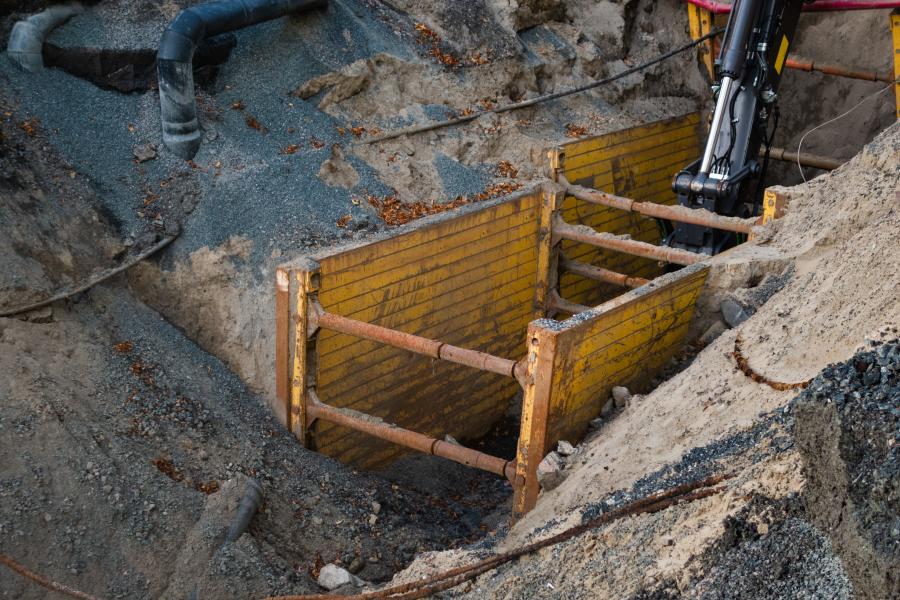The excavation of trenches is an important part of many constructions as well as engineering sites. They are utilized to install telephone lines, pipes, and any other tubular construction that must be installed deep underground, including oil drills. Due to the high moisture content of the soil, trenching can be an arduous task. This is because it is difficult to not just remove debris and dirt from surrounding objects but also to ensure safety as you could inflict serious injuries if you accidentally expose your skin.
Trench boxes are vital for any kind of construction or repair work that has to be done on the ground. They can be used to keep the ground from falling down based on the soil and material quality. Trench boxes are made of steel and aluminum frames to temporarily secure them before excavation starts. The grout is then fixed between two layers when necessary, to ensure that there are no cracks develop when properly installed at site level.

Pre Installation
Before digging before digging, you must understand the potential hazards. This includes knowing the equipment required and how many persons will need access to it, and an evaluation of whether there might be alternative methods by which the task could be completed without risking life or the limb (such procedures that require minimal intervention). Pre-excavation surveys must include an assessment of risk to ensure that all possible hazards are easily recognized. This reduces the risk of risks that could arise later.
It’s also crucial to evaluate the trench’s depth. A 5-foot strip of concrete will support you. If the trench is more than that, then shoring or sloping may be needed. If, however, the trench is 20 feet deep and is not straight, every building above ground needs to consider the greater danger of foundation movement.
A ladder, steps, ramp or ladder should be used to access the trench. In case emergencies it is essential to have safe access within 25 feet. The trench may also be required to test low oxygen levels as well as toxic gases in specially designed boxes known as “trench boxes”. These devices can be simple to install, but you have to be careful not to place them on top of other.
Care: Caring for the trench
1. Be sure to check the trench box or support daily to look for damage and any motion.
2. While working on-site, all personnel should be wearing their protective equipment and be wearing a steel-toed shoe and high-visibility clothing.
3. You should keep the heavy equipment and other tools at least 3 feet from the trench edge.
Extraction
Since the ground around the trench box is moving and it’s more difficult to build than to extract it. Chain slings may be utilized to lift soil and there are three options for lifting it. The last is using an overhead crane.
1. Straight Pull: This method is the most straightforward. Connect your sling to the two points and pull it out. There is no need for excess force or unneeded movements.
2. Half Pull: When you use half-pulls, connect it to just one end of the trench box, and lift as much as possible before switching it over. You can get rid of dirt and debris from the trench without causing any harm.
3. Single Pull: Attach a single chain sling leg to the extraction/lifting point to move the trench box. Then lift each panel separately with a single pull. Once it’s time to remove, however, you can use your trusted pull.
For more information, click shoring boxes